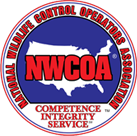MICE
Common Concerns & Safety Issues
Spread of bacteria, food stockpiling, and awful odor.
We're dedicated to create a safer and healthier environment for you and your family.
Customers & Locations
Parks
Athletic Fields
Golf Courses
Lake Front Properties
Private Communities
Industrial Sites
Athletic Fields
Golf Courses
Lake Front Properties
Private Communities
Industrial Sites
Business Parks
Townships
County Governments
Boroughs
Schools
Municipalities
Townships
County Governments
Boroughs
Schools
Municipalities
Professional Solutions
- Program design
- Population control
- Trapping and sealing off the home and office areas
- Proper placement of mouse traps
Understanding the
MOUSE
| Grouping | Seedivore, your bird seed has been stashed in many places in and around your home! |
| Nicknames | Field Mouse, Yard Mouse, Attic Mouse, @#$%^&*! |
| Best Known For | Keeping people up at night due to scratching on walls and ceilings. Stockpiling seeds and nesting materials under outside structures, woodpiles, covered objects, lawnmowers, and in sheds. Invading homes through holes as small as 3/8". Awful odor due to dead mice. |
| Life Span | 6 months to 1.5 years. Mice are low on the food chain. |
| Mating Season | Begins in spring and lasts through the summer. Habitats include open fields, outbuildings, attics, basements, underneath outside debris, abandoned equipment, lawnmowers, etc. |
| Reproductive Details | After a 20 day gestation period 3 to 8 mice are born in a litter. 2 to 5 litters per year. Mice are sexually mature at 7 to 8 weeks old and breed like rabbits. |
| Activity Cycle | Typically nocturnal and active year round. |
| Food | Cherry seeds, sunflower seeds, sorghum, maple seeds, acorns, grass seeds, agricultural crops, grains, household grain based products, and birdseed. Birds hoard away large quantities of food (including pet food). |
| Damage Signs | Chewing at areas of entry and nesting material gathered from upholstery, seat cushions, and insulation. Urine staining particularly on ceiling tiles. Other signs are chewed wiring and plastic piping, soiled insulation, and fecal matter on flat surfaces. |
| Treatment | Trapping and sealing of the home and office to stop entry. Yes it can be done! Solid baits (rodenticides) in agricultural and industrial settings. |
| Distinguishing Features | Deer mice, which are native to Pennsylvania, unlike the gray colored house mouse which arrived with our forefathers, are deer skin brown with a white belly, slightly furry tail, and very large ears and eyes. 2 to 3 inches in length excluding the tail. |
| Risk and Disease | Hantavirus - usually contracted when cleaning up mouse fecal matter, urine and saliva causing the virus to become airborne and breathed in. Care should be taken when cleaning and proper respiratory equipment should be used. It is important to note the Plague and remember that fleas transmit bacteria and can be found on rodents. Flat surfaces can be treated with a 10% bleach solution. |
| Nests | Nests are a jumbled compilation of natural and manmade materials ranging in overall size from a softball to cantaloupe and are located beneath, behind and inside a variety of undisturbed cavities both inside and out of the home. |


Integrated Wildlife Management is our comprehensive and effective one-stop solution. This approach brings together the six necessary elements to successfully resolve wildlife / human conflicts and when possible, safely relocate wildlife to a more suitable habitat.


